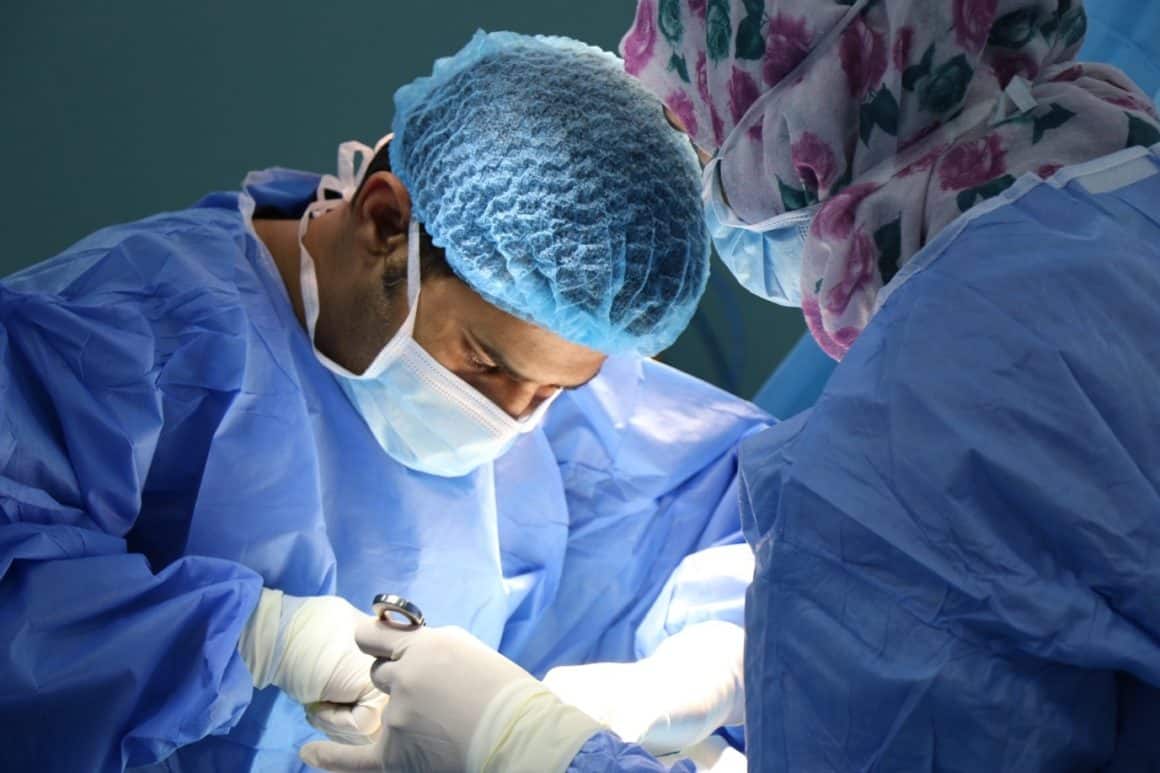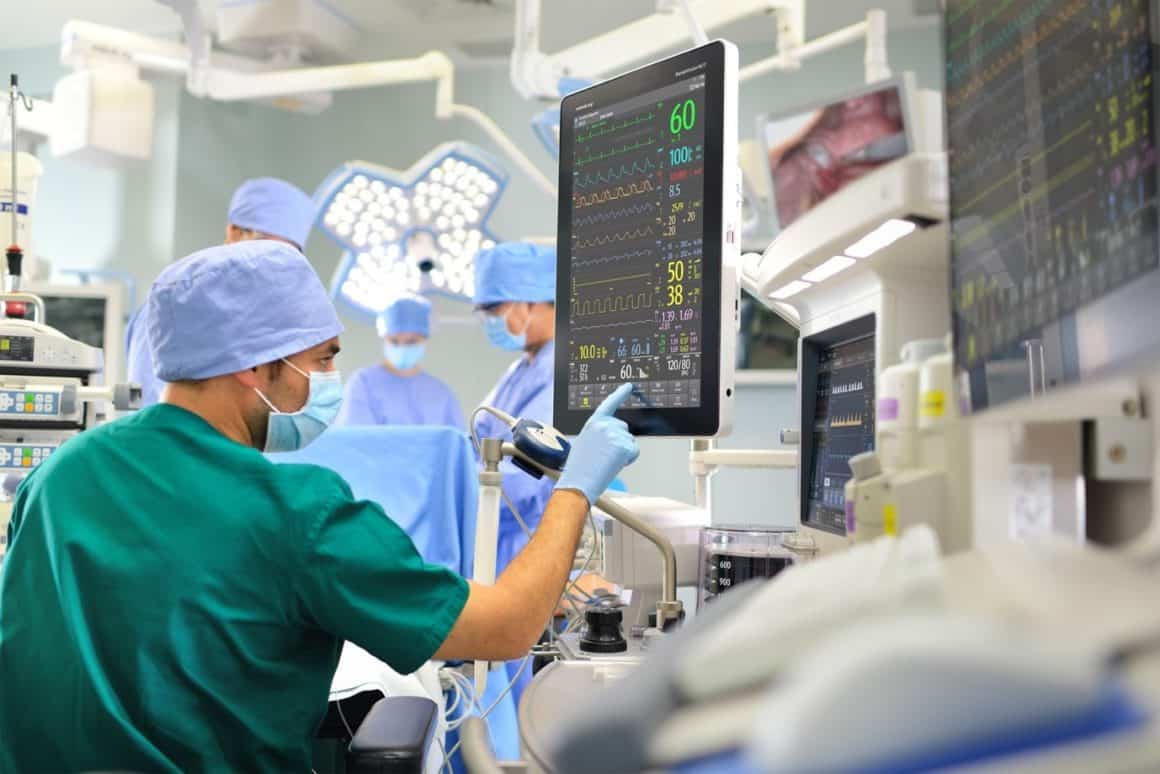Laparoscopy, or keyhole surgery, is quickly replacing open surgery as a safer option, but is it actually safe? Find out, here…

Laparoscopy (keyhole surgery) has become a hugely popular procedure amongst surgeons. It involves putting a high-resolution camera in the body to diagnose and treat health conditions.
The reason it’s become so popular is because of its relative safety over open surgery. But, is a laparoscopy actually the safer option, and what are the chances of negligence during surgery with this relatively new technique?
In this article, we will cover what laparoscopy is and what it’s commonly used for. We’ll then weigh the benefits and risks before concluding whether or not it’s safe.
What is a Laparoscopy?
Laparoscopy, also known as keyhole surgery, is a surgical procedure that examines the organs inside the body. According to the experts at Ceda Orthopedic Group, it’s touted as a low-risk, minimally invasive procedure as it only requires small incisions.
The surgery gets its name from the laparoscope; an instrument used to look at the organs in the abdomen. This tool is a long, thin tube with a high-intensity light and a high-resolution camera at the front that sends images to a video monitor.
A laparoscopy lets your doctor see inside your body in real-time and obtain biopsy samples if needed. Previously, this would only be possible with open surgery, which is considered a more dangerous procedure.
What Conditions are Laparoscopy Used For?
The chances are that, if you know what laparoscopy is, your doctor has already recommended the procedure to you for a specific condition. However, to get an idea of exactly what conditions it’s used for and how widespread keyhole surgery is, we’re going to list the two main ways it’s used and the conditions it’s used for.
Diagnostic Laparoscopy
Sometimes you can diagnose a condition using non-invasive methods, such as a CT scan, MRI or ultrasound scan. However, other times, the only way to confirm a diagnosis is to look at the affected part of the body with a laparoscope. Conditions in which keyhole surgery is used to diagnose include:
- Pelvic inflammatory disease (PID)
- Endometriosis
- Ectopic pregnancy
- Ovarian cyst
- Fibroids
- Female infertility
- Undescended testicles
- Appendicitis
- Unexplained pelvic or abdominal pain
A laparoscopy can also diagnose certain types of cancers by obtaining a sample of suspected cancerous tissue and sending it to a laboratory for testing. These include:
- Liver cancer
- Pancreatic cancer
- Ovarian cancer
- Cancer of the bile duct
- Cancer of the gallbladder
Treatment with Laparoscopy
We’ve focussed mostly on the diagnostic power of keyhole surgery, but it can also treat many conditions as well. These treatments include:
- Removing an inflamed appendix
- Removing the gallbladder
- Removing a section of the intestine
- Repairing hernias
- Repairing burst or bleeding stomach ulcers
- Performing weight loss surgery
- Removing some or all of an organ affected by cancer
- Treating ectopic pregnancy
- Removing fibroids
- Removing the womb (hysterectomy)
How is a Laparoscopy Performed?

Now that we’ve given you an idea of what the surgery is used for, it’s time to explain exactly how the laparoscopy procedure is performed for those of you who might be undergoing it. In an open procedure, one long incision is made down the abdomen to expose the tissue and organs for examination and treatment. In a laparoscopy procedure, only a small incision of up to 1.5cm in length is made in the abdomen, usually around the belly button area.
Once this incision has been made, the body is inflated with carbon dioxide to expand the abdominal walls and give the surgeon more room to carry out the procedure. This is when the laparoscope is inserted into the incision and examines the appropriate area inside the body.
If the surgeon decides to treat the condition or take a biopsy, further small incisions can be made, and other instruments inserted to perform the task. Once the keyhole surgery is over, the carbon dioxide is expelled from the abdomen, and the incisions are stitched up.
Robotic-Assisted Laparoscopy
For those of you undergoing this surgery, you need to be aware that the use of robots in laparoscopies has increased rapidly in the UK in recent years. In robot-assisted laparoscopy, the surgeon uses a console to control robotic arms that hold a special camera and surgical equipment.
The robotic system provides 3D magnified vision and an increased range of movement with smaller incisions. There’s evidence to suggest this type of keyhole surgery has a lower risk of complications than without it, as well as a shorter recovery time.
Benefits and Risks of Laparoscopic Surgery
Now that we’ve covered what laparoscopic surgery is used for and how it’s done, it’s finally time to weigh up whether the procedure is safe or not.
Benefits of a Laparoscopy
All surgical procedures come with a risk, and most people accept those risks as long as they’re less dangerous than the conditions they’re used to treat. In this context, it makes sense to compare laparoscopy to its predecessor – open surgery – to measure whether it’s the safer option. The benefits of laparoscopy over open surgery include:
- Less risk of infection
- Smaller incisions, so smaller scars
- Less pain when the scars heal, and you heal quicker
- Faster recovery so you leave the hospital quicker
- You get back to your normal activities quicker
- You may have less internal scarring
With traditional surgery, you might spend a week or more in the hospital, and your total recovery might take 4 to 8 weeks. With laparoscopic surgery, you might spend two nights in the hospital and recover in 2 to 3 weeks.
The reason keyhole surgery has a lower risk of infection than open surgery is that open surgery causes larger inflammatory reactions. These inflammatory reactions can make the patient more prone to viral and bacterial infections after surgery, potentially aggravating any pre-existing inflammatory conditions.
One of the unseen benefits of laparoscopic surgery is that the incisions cause fewer adhesions. Abdominal adhesions are pieces of tough tissue that connect to abdominal organs. Small adhesions don’t usually cause a problem; however, they can interfere with a woman’s ability to conceive and block the normal function of the intestines.
Drawbacks and Risks of a Laparoscopy

Unfortunately, as with all surgery, there are some drawbacks and risks associated with laparoscopy. The drawbacks of the laparoscopy procedure are:
- The surgeon has a limited range of movement going through a tiny incision
- Poor depth perception when using a camera compared to your own eyes
- The surgeon isn’t able to feel the tissue and is, therefore, unable to judge the force they need to apply
- Doing surgery through a hole using long instruments isn’t an intuitive motor skill, making it pretty difficult to learn
Because of these drawbacks, there are several risks associated with keyhole surgery. One of the main risks of laparoscopic surgery is an injury caused by trocar placement. The trocar is the device inserted into the abdomen at the beginning of the surgery to allow other tools to pass through. Trocars have been known to cause:
- Abdominal wall hematomas
- Large bowel penetration
- Blood vessel penetration
- Umbilical wound infection
Another risk is the electrodes used during laparoscopy surgery leaking current onto the tissue and causing electrical burns or even potentially perforating organs. However, as long as active electrode monitoring takes place, this shouldn’t happen.
The final risk we should point out is the pumping in of carbon dioxide. This cold, dry gas can increase the risk of hypothermia. However, surgical humidification therapy is usually administered to reduce the risk.
Not all of the carbon dioxide pumped into the abdomen is removed during surgery, and it can form pockets that place pressure on the diaphragm and phrenic nerve. This causes pain in the shoulders, but it usually subsides once the CO2 has been absorbed by the body and breathed out.
What’s the Verdict? Is Laparoscopy Safe?
Today, we’ve looked at some of the advantages and disadvantages of laparoscopy, but how do we weigh them up and decide whether the procedure is safer than open surgery?
Thankfully, smarter people than ourselves have done this for us. In this article published in the Journal of the Royal Society of Medicine, the authors discussed replacing open surgery with laparoscopic surgery.
They take note of the advantages; decreased recovery period, lower infection rates, decreased blood loss, less exposure of organs to the elements, and smaller scarring. They then compare these benefits with practical aspects, which are primarily negative; smaller visual field, limited range of motion, an effective ‘mirroring’ of the surgeon’s movements, longer surgery times and the dangers of the trocar and needle insertion.
The article was written in 2003, and medicine has come a long way since then. Despite the teething problems concluded within this study, many of these have started to disappear at this stage, so the overall risks are still fewer than with open surgery. Ultimately, it’s clear to see that if your affliction can be diagnosed or treated using this type of surgery, you should be in pretty good hands.
What’s Next?
Hopefully, you now understand what laparoscopy is and what it’s used to treat. It’s not entirely easy weighing up whether the procedure is safer than traditional surgery. Still, we are moving in that direction, and, as we do, many of the issues surrounding laparoscopy will likely fade away.
If you’re undergoing keyhole surgery, we hope everything goes well for you and that you make the swift recovery most people do after this procedure. Let us know, in the comments down below, if you’ve had keyhole surgery before, and let’s show everyone that it’s nothing to be afraid of!

